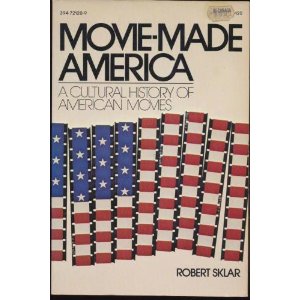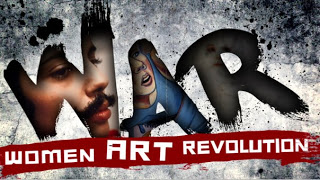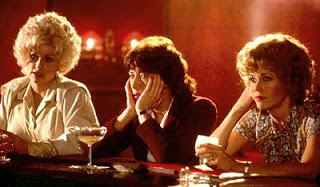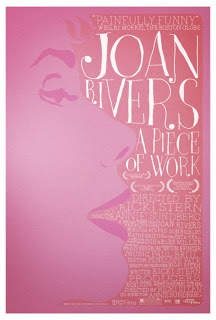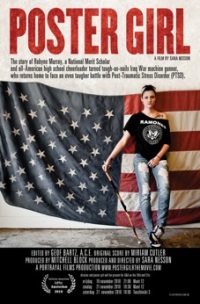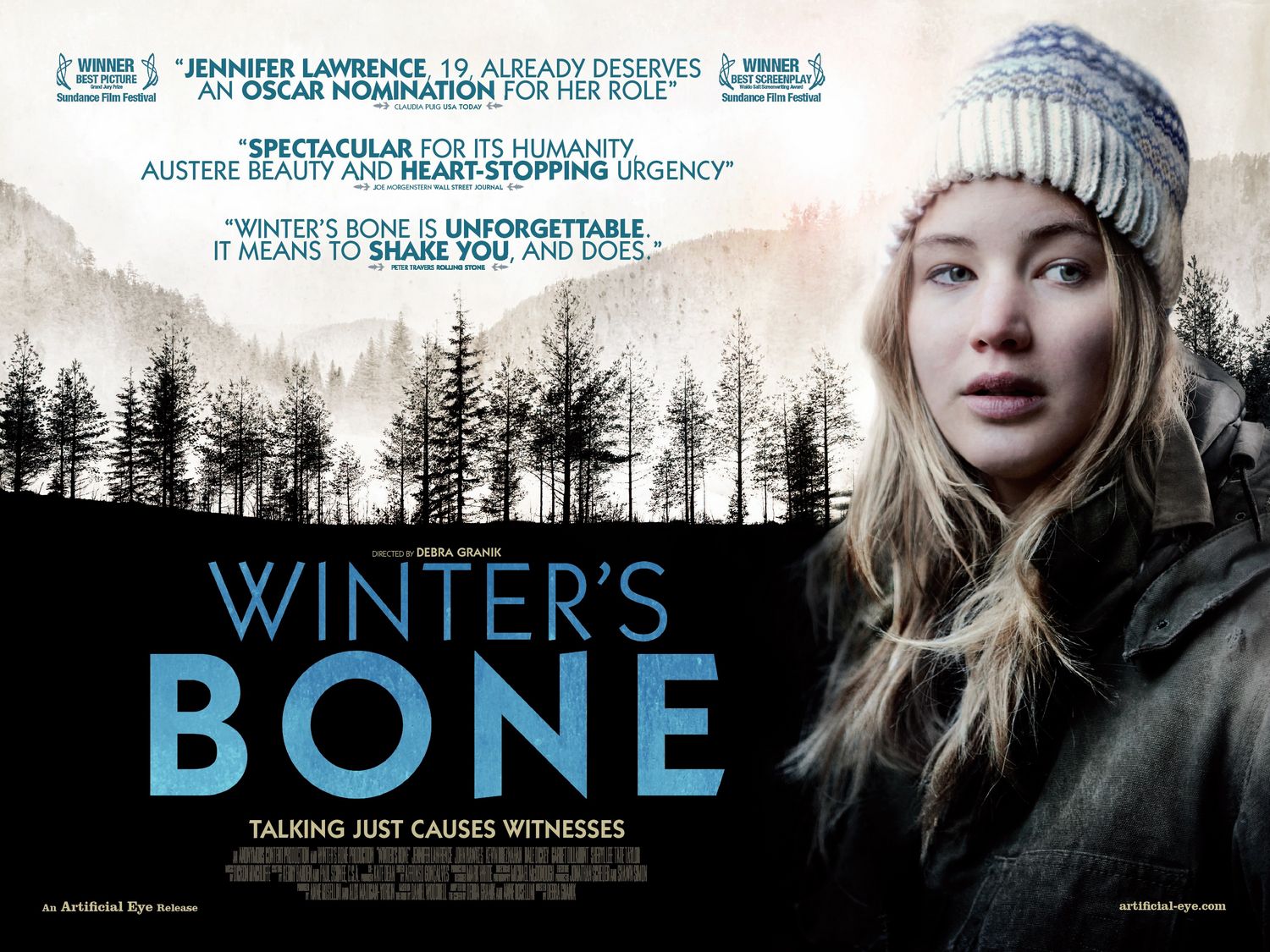 |
| Winter’s Bone |
I first saw
Winter’s Bone
last summer. I remember leaving the theatre feeling that I’d never seen a film quite like the one I’d just watched. The viewing experience had left me mentally exhausted; more than an hour-and-a-half of tension and suspense made me incapable of arguing exactly why the film was so astounding. After watching it again on DVD, I think I can discuss it with more clarity; however, this remains one you must see for yourself.
Spoilers ahead!
The Dolly family lives in rural Missouri, in the bleak, eerie, and impoverished Ozarks countryside. Ree Dolly (
Jennifer Lawrence) needs to find her father, who has recently been arrested again for cooking methamphetamine–seemingly the only profession in her community. She’s 17, has already left high school to care for her two younger siblings and chronically-depressed mother, and learns that her father put their house and property up as collateral for his bail. She clearly does not live the life of the so-called average American teenage girl; she teaches her siblings to shoot (both to hunt for their food and protect themselves) and skin a squirrel, she gives away their starving horse, chops firewood, and has precious few moments of camaraderie with someone her age–and even in these moments, the film’s ominous tone doesn’t lift.
This is a patriarchal world of heightened gender roles, where women operate as shields to protect their men, and have little power independently. Ree, having no one to speak out for or protect her, becomes an investigator, and thus an agitator. Instead of keeping the peace, keeping quiet, and knowing her place, she refuses to allow herself and her immediate family to be the victims of an irresponsible and criminal man–even if he is her father. She visits the homes of people she’s known her father to associate with, beginning with a low-level junkie and dealer, and her father’s brother, Teardrop (
John Hawkes). As she continues her determined climb through the countryside, the men become less accessible as woman after woman warns Ree against pursuing her father, and warns her, implicitly and explicitly, that there will be harsh consequences for asking questions.
What becomes clear, fairly early in the film, is that her father may be dead. This is, at least, the story her neighbor would have her believe, when he shows her a burnt meth lab. As with all characters in the film, however, he has his own motives. While her father’s death may seem like a solution–or the end of the story–it is not. For Ree–and those in her community, if you can call it that–simply knowing her father is dead proves nothing to those ready to seize her home; to them, he’s just a criminal on the run from his debts. Small acts of kindness (a joint, small amounts of cash, a borrowed pickup truck from a friend) help Ree along the way, but each is met by the cruelty of people desperate to protect their livelihood. We see a tenuous relationship develop between Ree and her uncle, a man who uses and seems always a breath away from violence, as the cast expands to include the county sheriff, a bail bondsman, and a powerful figure in the local trade. Cruelty and kindness collide in a climax so powerful that I won’t give it away here,
Rarely do films–mainstream ones, at least, with distribution deals and Oscar buzz–depict poverty–real poverty. Our main character has no resources. People in this situation exist in America–whether we like to think so or not. They’re not all criminals and they can’t all just remove themselves from bad situations by getting a corporate, minimum-wage job. In this film we see a teenage girl navigate a hostile and dangerous world which she had no hand in making. Despite her maturity and toughness, she hasn’t turned to “cooking crank” to financially survive, nor has she developed a “taste for it yet” to temporarily escape. Instead, she relies on the charity of neighbors (though we see little altruism from them; every instance is a coded threat, warning, or new debt to repay) and naively hopes join the Army and bring her family along. (We see Ree visit a recruiter in hopes of receiving a signing bonus she’s heard about–plenty of money to save her home. The even-handed scene plays straight and with little emotion, but nonetheless breaks your heart.)
Winter’s Bone was shot on location in Christian County, Missouri, with mostly non-professional actors–some of whom went back to regular, blue-collar jobs the day after filming their scenes, which likely adds to its authentic feeling. With a budget of only $2 million, Winter’s Bone was written by Debra Granik and Anne Rosellini, and directed by Granik. It has already won several awards–including the Grand Jury Prize and the Waldo Salt Screenwriting Award at the 2010 Sundance Film Festival, and the Best Ensemble Cast and Best Film Awards at the 2010 Gotham Awards–and has been nominated for numerous more, including seven Independent Spirit Awards (cinematography, director, feature, female lead, screenplay, supporting female, and supporting male), two Screen Actors Guild awards, and a Golden Globe. Oscar nominations come out Tuesday, January 25, and Winter’s Bone is expected to garner several nods from the Academy as well (although its odds for winning major awards–Best Picture and Best Director–don’t seem great, I’m still pulling for it).
Watch the excellent trailer below. Even after seeing the film twice, its trailer still gives me chills.

